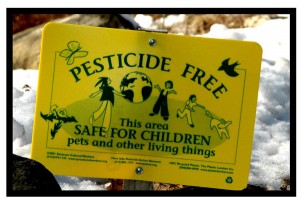 There are some things in pest control we cannot say; in fact in my state we are not allowed to use words like ‘safe’ or ‘non toxic’ in our yellow page ads or brochure materials. Still every year the advertisements are filled with words like 100% safe, eco friendly and won’t harm pets. The ‘cide’ at the end of any word means to kill. Homicide, suicide, herbicide, miticides, rodenticide and of course pesticide all refer to the killing of the noun which precedes the word cide. It may be different where you are as far as the laws referring to what a company can and cannot say but to claim that a pesticide application is completely safe and non toxic is not entirely true and is in my opinion irresponsible.
There are some things in pest control we cannot say; in fact in my state we are not allowed to use words like ‘safe’ or ‘non toxic’ in our yellow page ads or brochure materials. Still every year the advertisements are filled with words like 100% safe, eco friendly and won’t harm pets. The ‘cide’ at the end of any word means to kill. Homicide, suicide, herbicide, miticides, rodenticide and of course pesticide all refer to the killing of the noun which precedes the word cide. It may be different where you are as far as the laws referring to what a company can and cannot say but to claim that a pesticide application is completely safe and non toxic is not entirely true and is in my opinion irresponsible.
Other words that are not as regulated but equally misused and misunderstood are inorganic and organic pest control. It may surprise you to know that most pesticides are in fact, organic by definition. Since these products contain an element in their molecules known as carbon, they fall into the class of organic chemistry. On the other hand what we normally think of as organic or green products are really inorganic because they lack carbon. Additionally most of these are natural minerals such as diatomaceous earth, boric acid and silica gel which every ‘organic’ pest control company boasts of using.
Confused yet?
It’s easy to think that just because you use something that is naturally made that you are being as  safe as possible however some of the most toxic known substances are from Mother Nature. Cone shell venom for example is 1 million times more toxic than the insecticide permethrin. Confusion seems to be the only constant in this new wave of pest control and sometimes the customer doesn’t get at all what he or she thought they were. To make matters worse many inorganic pesticides are approved as organic pest control products such as boric acid which incidentally has no antidote if you ever take in to much.
safe as possible however some of the most toxic known substances are from Mother Nature. Cone shell venom for example is 1 million times more toxic than the insecticide permethrin. Confusion seems to be the only constant in this new wave of pest control and sometimes the customer doesn’t get at all what he or she thought they were. To make matters worse many inorganic pesticides are approved as organic pest control products such as boric acid which incidentally has no antidote if you ever take in to much.
There are also many products such as pyrethrums which are nothing more than crushed chrysanthemum flowers, what could be safer right? Used in aerosols and liquids this flushing agent is many times not approved for use as an organic product. The reason is not the main ingredient for this and many other such chemicals but some of the inert ingredients. Pyrethrum is usually combined with another chemical “synergist” called piperonyl butoxide which aids in the products toxicity and because of that it cannot be listed as organic even if is only a very small percentage of the overall volume in a can or solution.
 Another move in the pest control industry and this is maybe due to the confusion in the organic, inorganic debate is to “least toxic” or “minimum risk” insecticides. Most of these are plant based products and as such they are more acceptable to many customers. Schools now use this approach if for no other reason that it eliminates the requirement for ‘notification’ before treatments. Worried parents fears are also somewhat abated and maybe the school board will have to deal with one less alarmist Doctor or lawyer as well.
Another move in the pest control industry and this is maybe due to the confusion in the organic, inorganic debate is to “least toxic” or “minimum risk” insecticides. Most of these are plant based products and as such they are more acceptable to many customers. Schools now use this approach if for no other reason that it eliminates the requirement for ‘notification’ before treatments. Worried parents fears are also somewhat abated and maybe the school board will have to deal with one less alarmist Doctor or lawyer as well.
Of course as with everything now days the government is involved with shaping this framework of what is and is not acceptable. The NOP (National Organic Program) was established and in 1990 the Organic Foods Production Act was set up to create a list of what is considered organic and therefore approved. I’m not much for scientific speak but perhaps if you are you can check out the link which comes up as a pdf.
The main issue with all these “advancements” or “set backs” depending on where you stand is safety. No one wants to poison a child or family pet and the trend also is for helping the environment as well. It may be that you are looking through the yellow pages as we speak and want a “non toxic” solution to your pest control problem. The ad’s may state that they are 100% safe, organic and green but you should take some time to figure out what your definition is and see if the company your thinking of hiring matches up.
It may be that you are looking through the yellow pages as we speak and want a “non toxic” solution to your pest control problem. The ad’s may state that they are 100% safe, organic and green but you should take some time to figure out what your definition is and see if the company your thinking of hiring matches up.
My guess is that you may not find all that you are looking for but perhaps one company may do enough to satisfy what your needs are. On the other hand you may investigate further trying to define your goals and end up like me, naturally confused.




